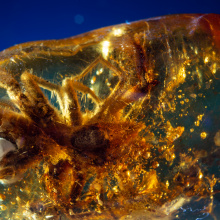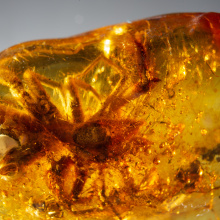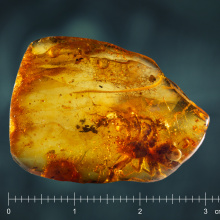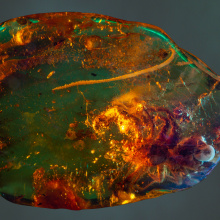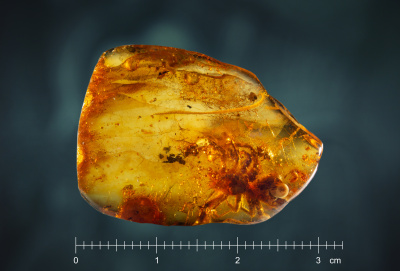
The Museum of Amber Inclusions at the University of Gdańsk continues to expand. This time, a unique arachnid of the Solifugae (solifuges) order has joined the university’s collection. It is the third specimen found worldwide and only the second species described from Eocene resin – Baltic amber.
The Museum already possesses almost 17,000 inclusions. Its mission is to collect and maintain fossils preserved in fossil resins, conduct scientific research, collect natural varieties and forms of amber, and carry out educational activities.
The value of the university’s collection has once again increased – thanks to a new species of solifuge: Eognosippus fahrenheitiana Dunlop, Erdek & Bartel, 2023 (Arachnida: Solifugae), an arachnid that lives contemporaneously in desert areas. One of its English common names, ‘camel spider’, refers to this feature (it is called solfuga or solpuga in Polish).
‘Fossils of solifuges preserved in Baltic amber are extremely rare (even inclusions of lizards or scorpions are more numerous), so we are all the more pleased that this specimen has found its way into our collection. Our new acquisition is shaped like a rectangular piece of amber measuring 24 × 33 mm. The arachnid is almost complete, although the dorsal surface is partially obscured by detritus and air bubbles, which makes photographing it somewhat difficult,’ says dr Elżbieta Sontag of the Evolutionary Entomology Laboratory and Museum of Amber Inclusions at the Faculty of Biology, University of Gdańsk.
Solifuges, of which 1208 living contemporary species have been described, are called wind scorpions, sun spiders, camel spiders or desert spiders in other languages. They are a moderately diverse group, currently found mainly in warmer latitudes and dry habitats. They are fast-moving, predatory arachnids with enlarged jaws, which makes them look very menacing, but unlike spiders, they do not have venom glands.
‘Globally, this is only the third specimen and the second species of solifuges to be described from Baltic amber. Based on it, a genus new to science has also been described,’ adds dr Elżbieta Sontag. ‘It is difficult to explain why a desert arachnid in the Eocene resin, which is associated with humid forest, but solifuges are also found in steppe areas. The fact is that they had little chance of falling into a resin trap, and this stands behind our piece’s uniqueness.’
The unique solifuge fossil preserved in Baltic amber was acquired from private collector Jonas Damzen from Vilnius and named after the Fahrenheit University Union in Gdańsk, whose authorities saw to it that the specimen was purchased for the university collection of the Museum of Amber Inclusions UG.

